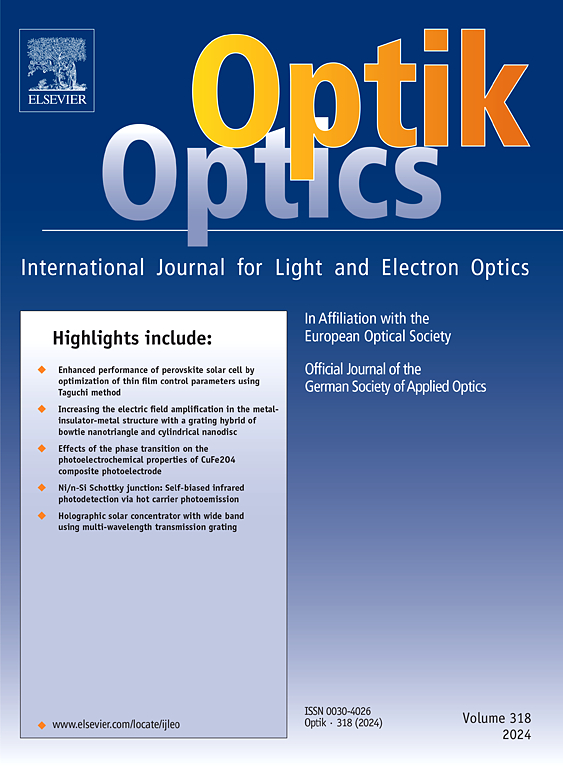Enhancing FSO SISO links performance under adverse atmospheric conditions using CPPM-based DS-OCDMA: Simulation and experimental validation
IF 3.1
3区 物理与天体物理
Q2 Engineering
引用次数: 0
Abstract
Free Space Optical (FSO) communication systems are a cost-effective solution for high-speed, secure data transmission with extensive bandwidth capabilities. However, their performance is significantly affected by atmospheric conditions, leading to challenges such as scintillation and transmission disruptions due to the inherent characteristics of photons. Recent research has focused on identifying modulation techniques that are resistant to scintillation to ensure reliable data transmission while maximizing user capacity per channel. This paper examines the use of Direct Sequence Optical Code Division Multiple Access (DS-OCDMA) in FSO links. We introduce Chaotic Pulse Position Modulation (CPPM) as a novel approach for generating DS-OCDMA sequences to enhance FSO link performance under adverse atmospheric conditions. Using Monte Carlo simulations for FSO Single Input Single Output (SISO) links, modeled with the Gamma-Gamma distribution to account for scintillation, we demonstrate that CPPM-modulated DS-OCDMA significantly outperforms conventional codes in terms of resilience to atmospheric turbulence, as evidenced by improvements in Bit Error Rate (BER). This paper also presents experimental results obtained from a fully functional, custom-built testbed designed to emulate an FSO SISO DS-OCDMA link in foggy conditions. These experimental findings not only validate the simulation results but also underscore the practical effectiveness of the proposed CPPM-modulated DS-OCDMA approach.
求助全文
约1分钟内获得全文
求助全文
来源期刊

Optik
物理-光学
CiteScore
6.90
自引率
12.90%
发文量
1471
审稿时长
46 days
期刊介绍:
Optik publishes articles on all subjects related to light and electron optics and offers a survey on the state of research and technical development within the following fields:
Optics:
-Optics design, geometrical and beam optics, wave optics-
Optical and micro-optical components, diffractive optics, devices and systems-
Photoelectric and optoelectronic devices-
Optical properties of materials, nonlinear optics, wave propagation and transmission in homogeneous and inhomogeneous materials-
Information optics, image formation and processing, holographic techniques, microscopes and spectrometer techniques, and image analysis-
Optical testing and measuring techniques-
Optical communication and computing-
Physiological optics-
As well as other related topics.
 求助内容:
求助内容: 应助结果提醒方式:
应助结果提醒方式:


